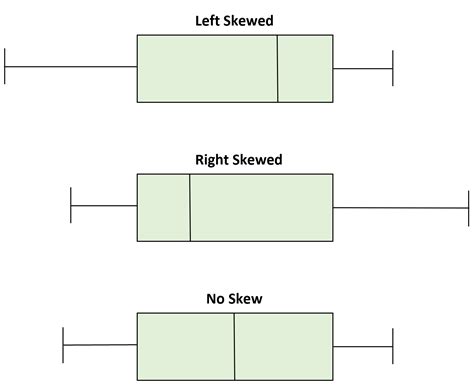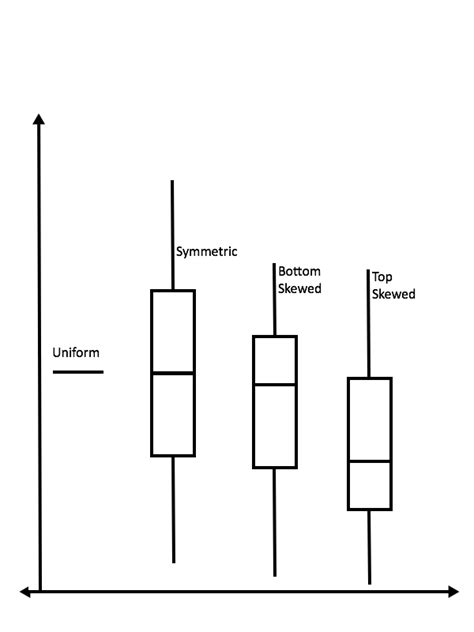bimodal distribution box plot Boxplots are better when interest focuses on inter-group comparisons of location and spread (across many groups) rather than when distributional shape is of direct interest. If multimodality is important to show - . The metal cubes that you can find around each kingdom are actually moon rocks! As you first play through the game, you will not be able to interact with these cubes. To unlock these moon rocks, you will need to beat the game.
0 · right skewed distribution boxplot
1 · right skewed box plot vertical
2 · negatively skewed box plot
3 · how to explain a boxplot
4 · boxplot alternatives
5 · bimodal skewed left
6 · bimodal and skewed right
7 · a boxplot shows which quantity
CNC machines: CNC machines are computer-controlled machines that can perform various tasks, such as cutting, drilling, engraving, and 3D printing. They use different tools and methods depending on the material and .
Boxplots are better when interest focuses on inter-group comparisons of location and spread (across many groups) rather than when distributional shape is of direct interest. If multimodality is important to show - .Figure 4: From left to right: box plot, vase plot, violin plot and bean plot. Within each plot, the distributions from left to right are: standard normal (n), right-skewed (s), leptikurtic (k), and .
Figure 2: A bimodal distribution showing two modes. One mode is around 9, and the other is near 12. A distribution can be unimodal (one mode), bimodal (two modes), multimodal (many .A box plot, sometimes called a box and whisker plot, provides a snapshot of your continuous variable’s distribution. They particularly excel at comparing the distributions of groups within your dataset.The violin plot for the bimodal distribution clearly shows the twin peaks of the known distribution. Unfortunately, box plots cannot differentiate between the A bimodal distribution is a probability distribution with two modes. We often use the term “mode” in descriptive statistics to refer to the most commonly occurring value in a dataset, but in this case the term “mode” refers .
Anomalies in the data, such as bimodal distributions and duplicate measurements, are easily spotted in a beanplot. For groups with two subgroups (e.g., male and female), there is a .
2. two clear peaks are called a bimodal distribution. (Here, the term "mode" is used to describe a local maximum in a chart (such as the midpoint of the a peak interval in a histogram). It does not necessarily refer to the most frequently .
Box Plots are made of five key components which together allows to get some information about the distribution of our data: Lower Extreme = Q1 – 1.5 (IQR), Upper Extreme = Q3 + 1.5 (IQR), where IQR denotes the inter . Boxplots are better when interest focuses on inter-group comparisons of location and spread (across many groups) rather than when distributional shape is of direct interest. If multimodality is important to show - especially if there are few groups - I'd strongly suggest using a different display, or perhaps several.Boxplots use robust summary statistics that are always located at actual data points, are quickly. computable (originally by hand), and have no tuning parameters. They are particularly useful for comparing. distributions across groups. and is one of the few plot types invented in the 20th century that has found widespread adoption. Due to.
In the context of a continuous probability distribution, modes are peaks in the distribution. The graph below shows a bimodal distribution. When the peaks have unequal heights, the higher apex is the major mode, and the lower is the minor mode. In contrast, a unimodal distribution has only one peak. What Causes Bimodal Distributions?When looking at a plot of a distribution, data analysts often consider the number of modes or “humps” that are seen in a plot of the distribution. Here, the concept of mode is slightly different (although related) to the concept of mode that you may have learned in previous mathematics or statistics courses.
Quantitative variables are displayed as box plots, histograms, etc. Before we can understand our analyses, we must first understand our data. The first step in doing this is using tables, charts, graphs, plots, and other visual tools to see what our data look like.
Here are some examples of bimodal distributions: Example #1: Peak restaurant hours. If you created a graph to visualize the distribution of customers at a certain restaurant by hour, you’d likely find that it follows a bimodal distribution with a peak during lunch hours and another peak during dinner hours:bution N(O, 54.95). The box plots in Figure 2(a) reflect the fact that all three have the same median and interquartile range. As expected, the density trace accurately reveals the shape of the distribution from which the random samples are drawn. The violin plot for the bimodal distribution clearly shows the twin peaks of the known distribution.
For example, what accounts for the bimodal distribution of flipper lengths that we saw above? displot() and histplot() provide support for conditional subsetting via the hue semantic. Assigning a variable to hue will draw a separate histogram for each of its . Box Plots are made of five key components which together allows to get some information about the distribution of our data: Lower Extreme = Q1 – 1.5 (IQR), Upper Extreme = Q3 + 1.5 (IQR), where IQR denotes the inter quartile range (IQR = Q3 – Q1).
We are going to look at four examples of non-normal distributions: (A) skewed, (B) peaked, (C) flat, and (D) bimodal. Each of the four data sets include 100 responses on a 5-point scale. When the data are skewed, (example A), the median may occur at or near one end of the box plot and the whiskers will be of unequal length. Boxplots are better when interest focuses on inter-group comparisons of location and spread (across many groups) rather than when distributional shape is of direct interest. If multimodality is important to show - especially if there are few groups - I'd strongly suggest using a different display, or perhaps several.
right skewed distribution boxplot
Boxplots use robust summary statistics that are always located at actual data points, are quickly. computable (originally by hand), and have no tuning parameters. They are particularly useful for comparing. distributions across groups. and is one of the few plot types invented in the 20th century that has found widespread adoption. Due to.In the context of a continuous probability distribution, modes are peaks in the distribution. The graph below shows a bimodal distribution. When the peaks have unequal heights, the higher apex is the major mode, and the lower is the minor mode. In contrast, a unimodal distribution has only one peak. What Causes Bimodal Distributions?When looking at a plot of a distribution, data analysts often consider the number of modes or “humps” that are seen in a plot of the distribution. Here, the concept of mode is slightly different (although related) to the concept of mode that you may have learned in previous mathematics or statistics courses. Quantitative variables are displayed as box plots, histograms, etc. Before we can understand our analyses, we must first understand our data. The first step in doing this is using tables, charts, graphs, plots, and other visual tools to see what our data look like.
Here are some examples of bimodal distributions: Example #1: Peak restaurant hours. If you created a graph to visualize the distribution of customers at a certain restaurant by hour, you’d likely find that it follows a bimodal distribution with a peak during lunch hours and another peak during dinner hours:bution N(O, 54.95). The box plots in Figure 2(a) reflect the fact that all three have the same median and interquartile range. As expected, the density trace accurately reveals the shape of the distribution from which the random samples are drawn. The violin plot for the bimodal distribution clearly shows the twin peaks of the known distribution.For example, what accounts for the bimodal distribution of flipper lengths that we saw above? displot() and histplot() provide support for conditional subsetting via the hue semantic. Assigning a variable to hue will draw a separate histogram for each of its . Box Plots are made of five key components which together allows to get some information about the distribution of our data: Lower Extreme = Q1 – 1.5 (IQR), Upper Extreme = Q3 + 1.5 (IQR), where IQR denotes the inter quartile range (IQR = Q3 – Q1).

metal brackets for wood beams canada
metal brackets shelves

Heating Contractors in Aurora, CO. See BBB rating, reviews, complaints, & more.
bimodal distribution box plot|a boxplot shows which quantity